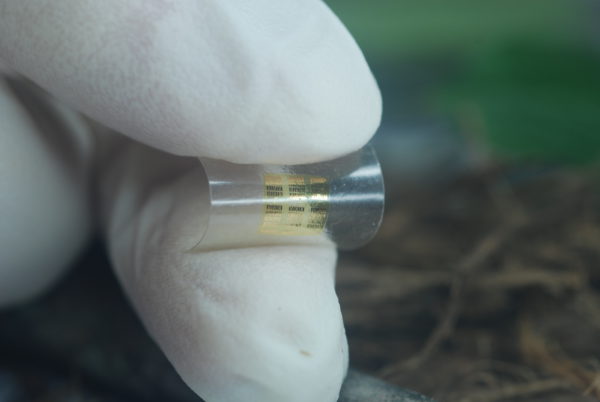
Researchers at the University of Wisconsin-Madison and the U.S. Department of Agriculture Forest Products Laboratory (FPL) have developed a semiconductor chip, the support layer of which is made of wood. The support makes the majority of the chip’s structure.
The material used is cellulose nanofibril, a flexible, biodegradable material made from wood. The invention makes the traditionally non-renewable, non-biodegradable and potentially toxic computer chips so safe that they can be disposed in the nature, where they degrade naturally as safely as fertilizers.
The two main challenges to be overcome in the development work were surface smoothness and potential expansion of cellulose nanofibril. They both are due to the fact that wood is a natural material and is able to absorb moisture from the air and hence expand. Both challenges were overcome with an epoxy coating.
